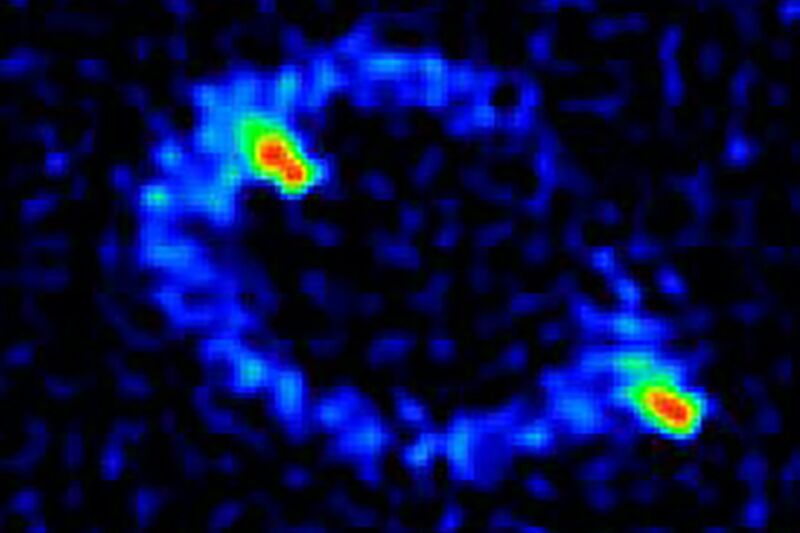Astronomers have finally measured the distance of first observed Einstein ring

Enlarge / A radio image of MG 1131+0456, the first observed Einstein ring, taken with the Very Large Array network of radio telescopes. (credit: VLA)
Astronomers around the world may have lost access to their telescopes during the coronavirus pandemic, sheltering in place along with the rest of us, but that hasn't kept them from advancing their field. Two astronomers used the shutdown to comb through existing datasets to hunt for a rare type of quasar and wound up rediscovering a so-called "Einstein ring" first observed back in 1987. They became the first to officially measure its distance from Earth, as reported in a recent paper published in The Astrophysical Journal Letters.
An Einstein ring is a direct consequence of the general theory of relativity; mass bends and warps spacetime, and light must follow that curvature. (An Einstein cross is an even rarer effect.) As Matthew Francis reported for Ars back in 2012:
For a sufficiently large mass, the light's shift may be sufficiently large that we can measure it, and it can produce lensed images of the original light source. In gravitational lensing, the lens is a galaxy or galaxy cluster lying between Earth and a distant source, itself typically a galaxy. If the lens is directly in the line of sight, the image of the source galaxy can be distorted into an Einstein ring, a circular image of the source. By studying the shape and other characteristics of the image, observers can reconstruct details about both the lens and the source galaxies.
Einstein himself thought an Einstein ring would be impossible to observe, but he was thinking of rings formed by stars, noting that it would be highly improbable to get stars to align in just the right way to produce the "halo" effect. A single star would also form too small of a lens, thereby defying, as Einstein observed in a 1936 paper, "the resolving power of our instruments." (The angular size of an Einstein ring increases with the mass of the lens.) But galaxies (and galaxy clusters) do make for a sufficiently massive lens.
Read 8 remaining paragraphs | Comments